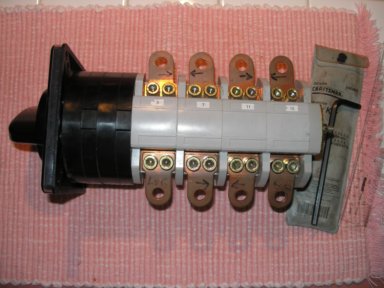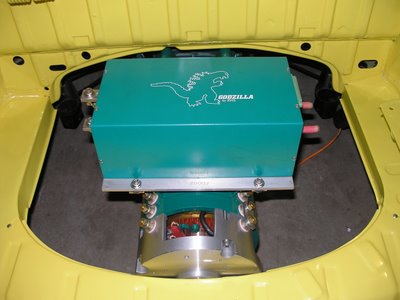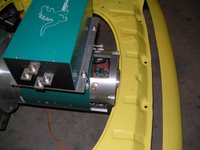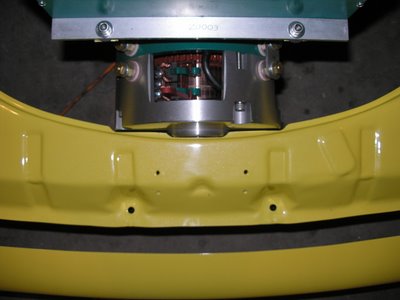Disconnect This!

One component that is not currently available in an EV-specific form is a high voltage, high amperage circuit breaker and/or emergency disconnect. Each converter has to come up with his own solution, and they range from homebrew knife switches to springloaded Anderson connectors, to the simply effective industrial fuse holder used in White Zombie. I had the good fortune of being mentored by Dan Bortel, a local EV collector and recently-retired electrical engineer with an extensive collection of EVery imaginable form of surplus.
One of Dan's finds was a rotary switch from a huge Uninterruptible Power Supply. It is a set of four stackable contactors, activated by a springloaded, panel-mount rotary handle. The thing is rated for 600 volts, 200 amps per set of contacts. Luckily, the unit is made of lightweight thermoplastic, with most of the mass concentrated in copper and contact points. With four contacts in series, it should have no trouble handling anything I can dish out.
During the battery clamp fabrication with Marko, we whipped out an enclosure to mount this switch under my dashboard, and local motorcycle EV'er Damon Henry supplied some surplus busbar to link EVerything together!







